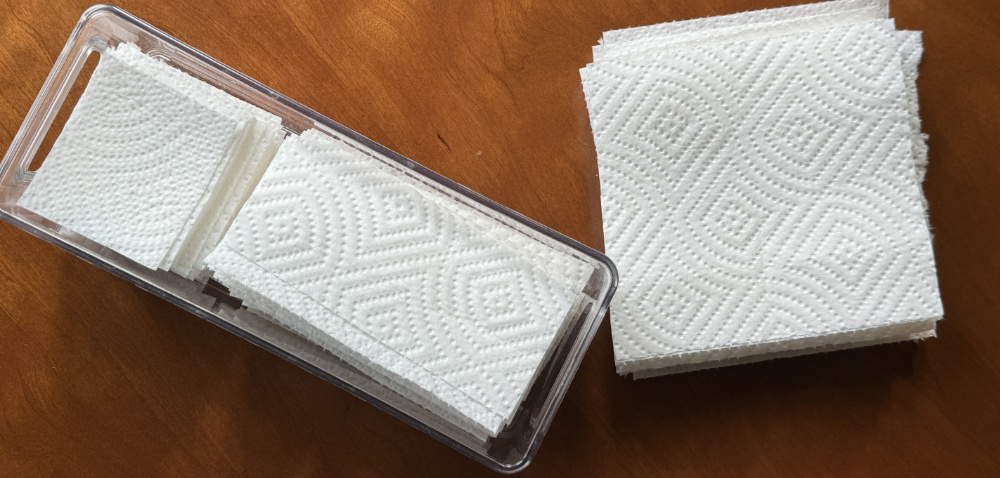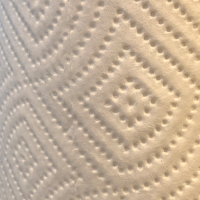 Like many, I have been trying to reduce my consumption of single-use products. Not only does this reduce my contribution to landfills, it also helps lessen the impact from the packaging and from manufacturing these products in the first place.
Like many, I have been trying to reduce my consumption of single-use products. Not only does this reduce my contribution to landfills, it also helps lessen the impact from the packaging and from manufacturing these products in the first place.
Now, I’m not stupid: I realize that my sole contribution/reduction represents a tiny fraction of a mere droplet in a raging sea of problems. But every drop of effort toward correcting these problems accumulates into a trickle, then a stream, then a river that affects real change.
Of course, reducing use of single-use plastics is a more impactful way to reduce long-term problems churning in the world’s landfills and oceans. I’ve gone far to reduce my use of single-use plastics, but why stop there? Earlier this year when I looked for other single-use products to focus on, I turned to paper towels.
A little background
It seems like paper towels have been around forever. In fact, according to the Wikipedia paper towel page, they were introduced in 1907 by the Scott Paper Company.
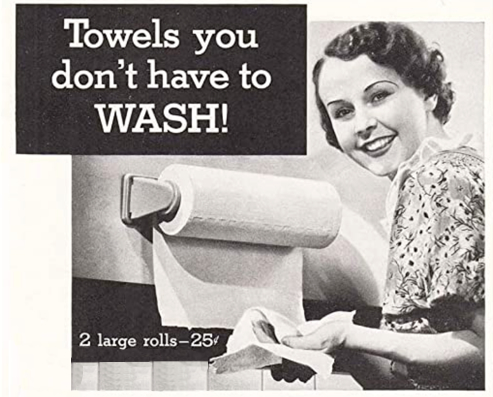
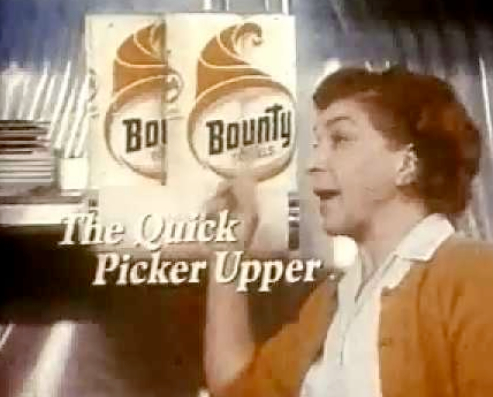
Reducing the use of these quicker-picker-uppers is certainly not on par with reducing the use of single-use plastic, but think of this, which I paraphrase from this blog post by papertowelroll:
In your lifetime you’ll likely use thousands of rolls that will be the equivalent of an entire woodland. Imagine a local forest that you’ve walked through being cut down entirely for paper towels!
And paper towels contain more than just trees. They are usually bleached, and to increase absorbency they have been treated with dioxins and other potentially toxic ingredients (which is rarely disclosed in the paper towel packaging).
Add to this the problem of disposing of the plastic packaging the paper towels came in. And a final reason to consider making the switch: if you stop using paper towels, you will never run out or have to buy them again.
Making the switch
I purchased two different cloth paper-towel-replacement products online, but I wasn’t happy with the absorbancy of either one, and they were also two or three times larger than I wanted.
As dish towels are a common beginner’s knitting project I decided to make them myself. However, after finishing just one, I figured that was a whole lot of time and effort that I’d rather invest in better knitting projects!
So I bought 12 cotton dish towels, cut them into quarters, and used my sewing machine to stitch the edges to stop fraying. These 6 x 6-inch absorbent cloths are the ideal size!
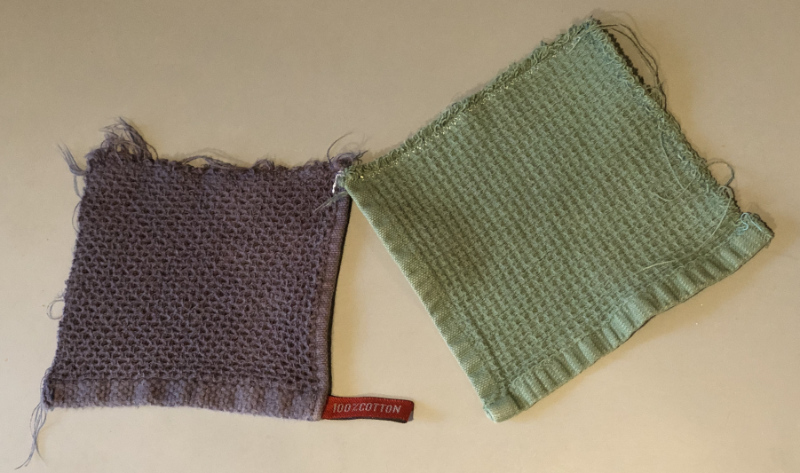
I am still looking for a good ready-made solution to recommend to others, as not everyone has the time (or a sewing machine) to do what I did. If I find anything, I’ll update this post.
I keep the cloths in a wire basket on the counter by the stove where they are easy to reach yet still out of the way. Sometimes, if a cloth is used for something innocuous like wiping up a little spilled water, I’ll set it nearby for re-use.
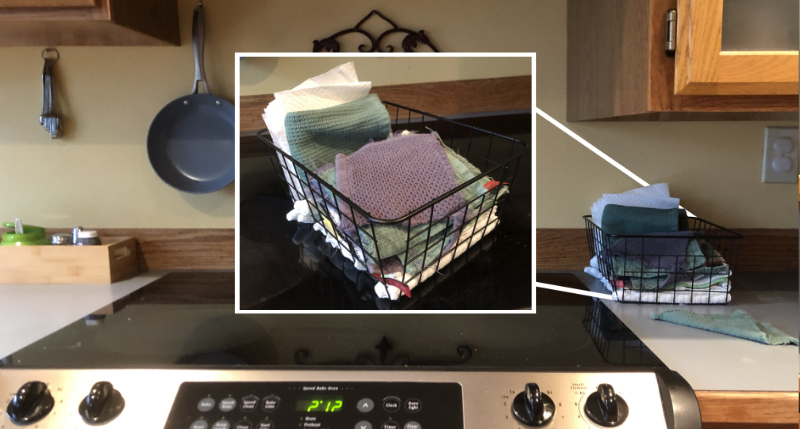
Used cloths are rinsed, if necessary, then piled near the sink. Whoever is next heading toward the laundry room tosses them in the washer. Then they are washed with the next laundry load.
This works for us because we run loads through the washer every two or three days. If you use your washer infrequently, then be sure your used cloths are mostly dry before putting them in the washer, and that you have a big enough supply of them.
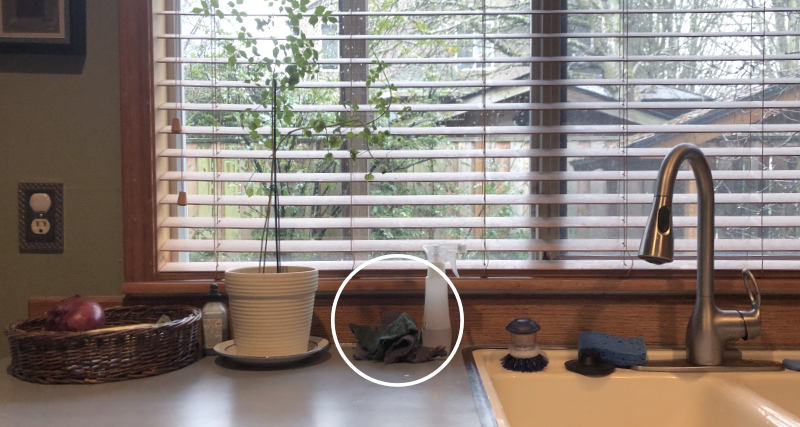
I told a few friends about this, and one asked, aren’t the used cloths stinky?
No, they aren’t at all. The majority of uses are pretty neutral, like wiping up water or wiping counters. Any time we’ve wiped something that has a lot of organic content, like spilled juice, for example, we rinse the cloth before tossing it on the pile.
We still have some paper towels left over from our stockpile from before. We keep a few squares of it folded and set in the back of our basket for wipe-ups that we would rather just throw away, although this rarely comes up. We have three rolls of paper towel left over from when we used to buy it, and I expect this will last us for about ten years!
For the first week it was weird to use cloths, but now that we’re used to it after several months, we are thrilled. It is convenient, it saves money, and it just plain feels great to know we are doing our part to help with the environment.
Update: A year later
A year later and we still love this solution. I highly recommend doing this as a replacement for paper towels and paper napkins. We still have a few rolls of paper towel sitting in the garage, and I’ll bet this time next year we still will.
Another update: But what about the septic system?
About five years after we switched away from using paper towels, we moved out of the suburbs into a rural area where we have a well and septic system. We decided early on to go a bit over the top with taking care with the septic system so as to extend its life a bit. This means more carefully wiping down dishes before putting them in the dishwasher, and we don’t want to do that with cloth towels, as any stuff wiped from the plates onto the towels would still end up in the septic system when laundered. We had to use paper towels!
To minimize our use of the paper towels, we start with the smaller rectangular pieces:
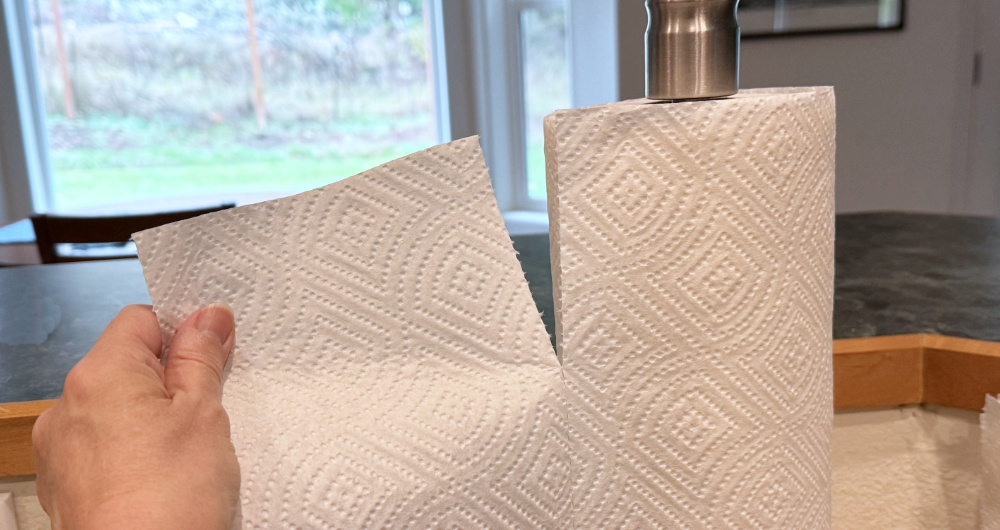
We cut them up into halves, quarters, and eighths: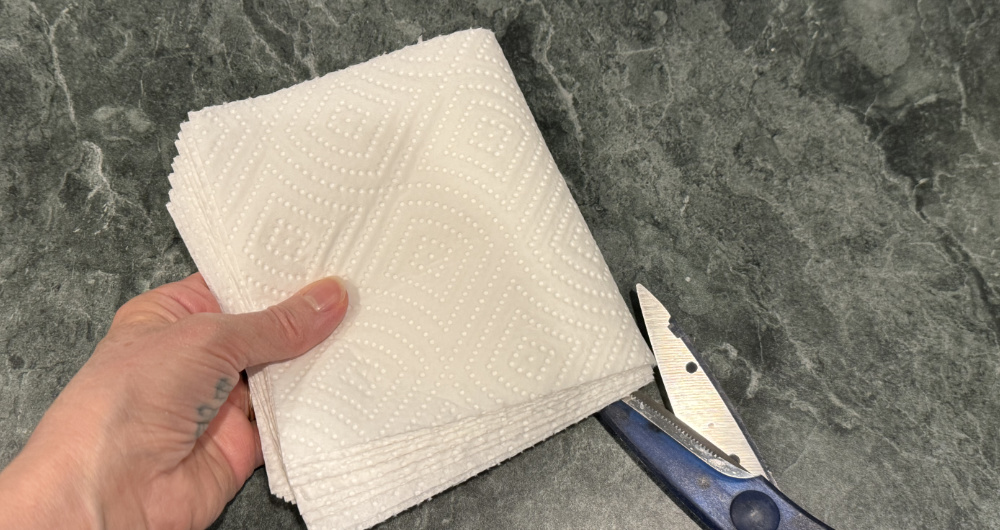
Then we keep stacks of each size in a container on the counter for easy use. We still use the cloth napkins for many things, but when we need to wipe a mess or a dish before it goes into the dishwasher, we use the smallest piece we can.

